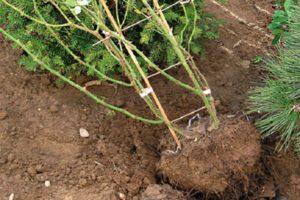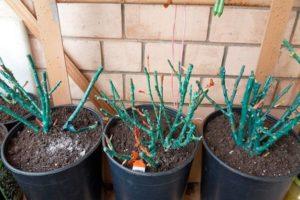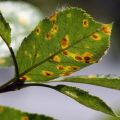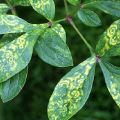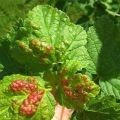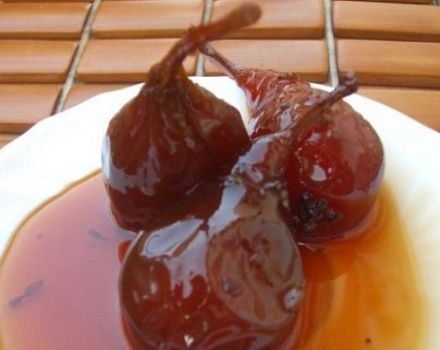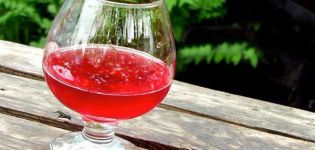How to treat roses from rust, folk remedies and chemicals
Favorite roses got sick, the stems cracked, the leaves began to curl. An insidious type of fungal disease that affects all types of flowering plants can cause irreparable harm to your favorite rose garden. What to do if signs of rust appear on roses, how to treat and how to avoid rust? Consider methods of combating fungal infection with alternative methods and a method of treating fungicides.
Why does rust appear on the rose?
Weakening of plant immunity, poor-quality, unsystematic plant care, lack or excess of fertilizers, bad weather conditions are prerequisites for outbreaks of fungal diseases in rose gardens.
The fungus of the genus Phragmidium disciflorum spreads quickly, often roses pick up an infection from other diseased plants in the garden, pathogenic spores are carried by the wind, get into the soil with water.
Important! When the first signs of the disease appear, it is necessary to sound the alarm, treat the affected bushes with fungicides. As a prophylaxis of the disease, folk remedies are used.
After processing the leaves, stems and buds of plants, the soil must be disinfected; if possible, it is recommended to replace the upper part of the soil.
Fresh manure is never applied under the roses as an organic fertilizer. A shrub can get burned by large amounts of nitrogen, and the risk of developing rust increases.

What types of roses are most often affected by the disease?
All types of roses are affected by the insidious fungus: tea, climbing, park, species roses based on wild rose. The disease does not spare the plants; with advanced variants of the disease, the plant must be removed.
Breeders improve the varieties of roses every year. For beginners, when choosing flowers, it is recommended to give preference to varieties that are resistant to rust and other types of fungal diseases. Their list can be found in the description of the variety on the package.
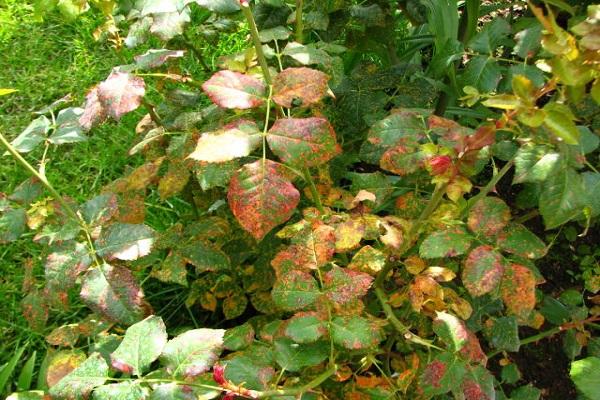
Signs of rust
An experienced gardener regularly examines the flower beds for the first signs of disease or insect pests. It is not difficult to identify rust, the disease has the following symptoms:
- Bright orange spots and specks appear on the leaves, stems, buds of roses.
- The plant slows down its growth rate.
- Some of the buds are deformed.
- The leaf plates turn yellow and fall off.
- The stems are cracked.
The first signs of infection can be seen in the spring in mid-May. The fungus lives on roses all season. In autumn, with the arrival of the first cold weather on the surviving bushes, the orange coating of rust changes its color to black.
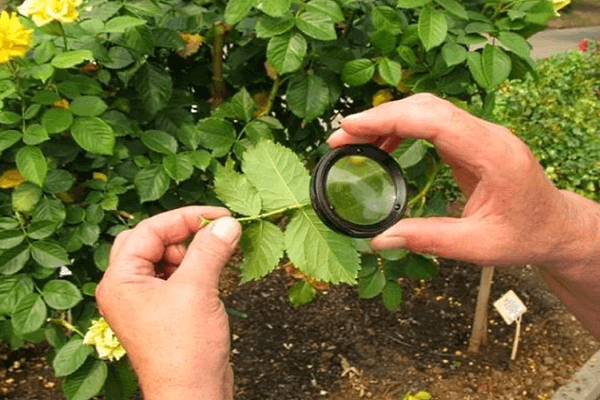
Measures to combat the problem
When a fungal plaque appears on the plant, it is necessary to immediately begin treatment. First of all, it is necessary to find out the reasons contributing to the development of the disease, and, if possible, eliminate them.
Remember that when treating rust, it is necessary to process not only the upper part of the plant, but also to disinfect the soil. In autumn, it is recommended to remove the top layer of soil under the infected shrubs, adding instead pure fertile soil, consisting of a mixture of black soil, sand and wood ash.
Folk remedies
The problem of fungal diseases of ornamental flowering shrubs has been known to gardeners for a long time. As preventive measures and a small area of infection, folk remedies are used.
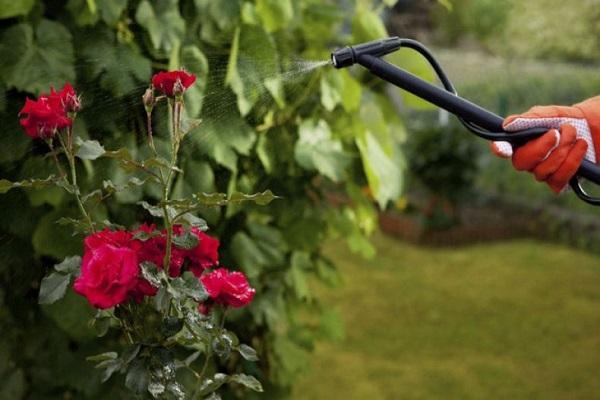
Nettle infusion
A weed grows on any garden plot - nettle. This plant can be useful, on the basis of burning herbs, an infusion has been made since ancient times that can fight rust on roses.
Collected nettles are crushed and poured with boiling water at the rate of 10 liters of water in half a bucket filled with chopped nettles. The mixture is allowed to stand for two days, then the infusion must be filtered and used for spraying. Repeat the procedure if necessary.
Wormwood infusion
Wormwood on the site is a little more difficult to find, this herb is more common in the fields, but for 10 liters of water it will need half as much as nettle. Wormwood is crushed, poured with boiling water and insisted for 24 hours. The infusion is filtered and sprayed with diseased roses. It is recommended to treat the soil under the bushes by watering the rose with the remaining solution.
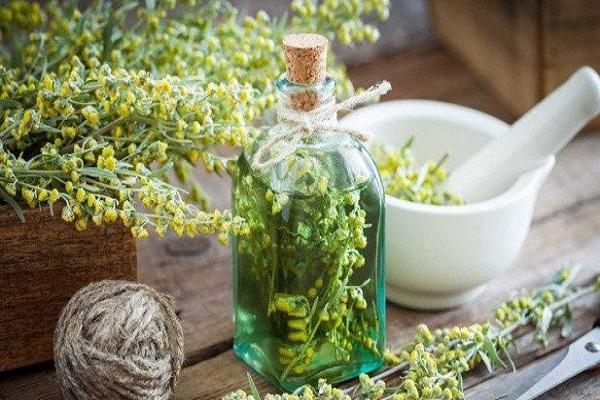
From tea with vodka
To create a cure for rust, you can use an infusion based on tea with vodka. To make it, you need to prepare a strong infusion of black tea and add a small amount of alcohol or vodka to it, mix thoroughly. The leaves and stems of diseased plants are wiped with cotton pads with this solution. The product is suitable for indoor roses.
Baby or laundry soap
This solution is easy to prepare. Two bars of laundry or baby soap are rubbed on a grater, the shavings are dissolved in 10 liters of warm water. You can apply the product to the plants by spraying or using a cotton swab. It is recommended to spray the soil under the infested flower. The procedure is carried out several times with an interval of 3-4 days.

Fungicide treatment
You can get rid of rust on roses by using fungicides. The use of chemicals is justified in the case of a large focus of the disease and if folk remedies did not help.
"Falcon"
Fungicide produced in the form of a concentrated emulsion. The manufacturer is the German company Bayer. The active ingredient is spiroxamine. Able to inhibit the effect of mixed infections. The funds are applied to the affected plants according to the instructions. It is enough to carry out a single treatment per season.
Falcon is an economical product with low consumption. Protects plants from fungal spores throughout the growing season. Not hazardous to humans, bees and small animals.

"Stroby"
A new generation fungicide with a broad spectrum of action. Refers to biological products that are safe for humans and bees. The active ingredient is kresoxim-methyl. The high efficacy of the drug was noted when applied on wet leaves.
Bordeaux liquid
A time-tested remedy against fungal diseases of ornamental, fruit and vegetable plants is a mixture of copper sulphate and hydrated lime. It is used against rust, gray mold, coccomycosis and other fungal diseases. Roses are treated with Bordeaux liquid in spring and late autumn. The product is applied to the leaves and stems of plants.
"Topaz"
Fungicide of systemic action.Refers to long-acting drugs, it is enough to process roses once a season. The product is quickly absorbed by the plant, the product is safe for humans, bees, and small animals.

How to prevent rust on flowers?
Roses are decorative flowering plants that are susceptible to infection by various fungi, in particular, rust. To prevent the development of rust in rose gardens, it is recommended:
- Growing varieties of roses with resistance to rust.
- The correct choice of place and soil for the flower bed.
- Preventive treatment of bushes with fungicides in early autumn and before winter.
- Sanitary pruning of roses.
- Control of the amount of application of nitrogenous fertilizers and fresh organic matter.
- Timely identification of the first signs of the disease.
- Maintaining the required level of soil moisture.
With the right choice of place and respect for flowers, growing thorny beauties will become a favorite business that does not bring hassle.
Blooming healthy roses will reward the gardener with their fragrance and neat appearance for their hard work.
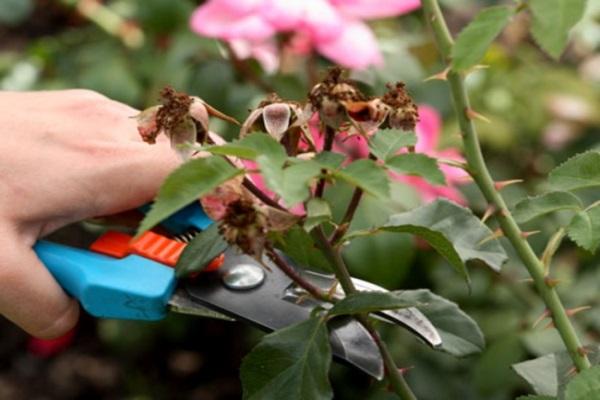
Resistant varieties
Thanks to the efforts of breeders, it is not difficult to select varieties of roses with immunity to rust, just read the description of the variety. The manufacturer will always emphasize in the advantages of the species the plant's ability to withstand fungal diseases.
For example, the following varieties should be distinguished from hybrid tea roses:
- Elina;
- La Perla;

Popular floribunda varieties with persistent immunity:
- Morena;
- Rosenfee;
- Goldelse.
Of the climbing varieties, it should be noted:
- Santana;
- Aloha;
- Belcanto.
When forming a rosary, it should be remembered that even modern varieties with increased immunity to infections can get sick in the absence of planting care. They carry out preventive treatment of plantings, carry out systemic care of plants. When the first signs of infection are found, the bushes are treated.
In the early stages of the spread of the infection, rose bushes can be saved.
